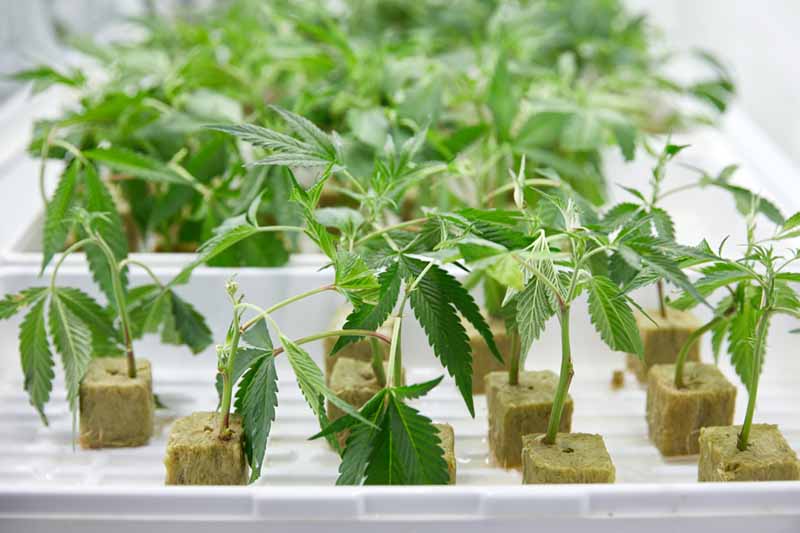The Hop Latent Viroid (HpLVd), as the name suggests, was an infectious pathogen first identified in hops in 1971. Hops and cannabis belong to the same group of plant species, but while the virus is asymptomatic in hops can quickly cripple cannabis and hemp.
The disease was first confirmed in California’s cannabis industry in 2018, but due to its often-dormant nature and misidentification has probably been a concern for some time. As genetics were distributed from the West Coast following legalization, HpLVd is thought to have spread alongside them. Detected across the United Stated and Canada, symptoms of HpLVd include ‘dudding’ throughout vegetation and flowering, with stunted growth resulting in poor flower and trichome production. Other symptoms are characteristic of fungal or bacterial infections, such discolouration, sagging brittle branches and deformed growth.
A SILENT KILLER
If untreated HpLVd can quickly circulate throughout crops, at a significant detriment to yield and revenue. It is not uncommon for contaminated plants to appear healthy and not show signs of infection, so growers are unlikely to know if their cannabis is affected. This enables the pathogen to enter and spread through a grow without detection. As it is frequently asymptomatic, HpLVd can be incredibly hard to identify, contain and eradicate.
HpLVd’s latency in displaying symptoms could be due to the virus needing to reach a certain threshold before becoming apparent. This would mean that asymptomatic plants may need to reach a tipping point before dudding occurs. Once this pivotal stage has been reached, the damage has been done with a heavy reduction in yield. Although research on its transmission is ongoing, the virus has been found to spread through unsanitised equipment and propagation with infected plants – with the pathogen carried through seeds. According to anecdotal reports, infections typically occur when infected genetics are introduced into a healthy garden, where the virus quickly spreads to other plants.
TREATMENT OPTIONS
As the disease is largely symptomless it can be hard to identify, which hinders its treatment. The quickest and most effective way to do this is through diagnostic screening tests, which identify antigens specific to each pathogen. As viruses, such as HpLVd, can spread internally from sick to healthy parts of the same plant, numerous samples may need to be tested to determine infection.
Unfortunately these tests only work on live plants and not seeds. As HpLVd is so contagious and crippling, we would always recommend erring on the side of caution by immediately removing infected plants, their cutting and their seeds. Once these have been pulled from the environment, any plants that returned a negative tests but have been close to affected specimens should be quarantined immediately.
If a plant is infected that cannot be simply removed from production, such as proprietary parent stock, growers may need to resort to tissue culture techniques to eliminate the virus. These technologies are incredibly complex, expensive and cannot guarantee HpLVd is purged completely – which limits their efficacy. There are also concerns that following the treatment plants may be less resilient, which is a concern for mothers that undergo significant stress when cuttings are taken.
PREVENTION IS THE BEST CURE
As a result of the disease’s severity and the complications with its treatment, growers should always follow the necessary steps to maintain a healthy garden free of HpLVd and other pathogens. Prevention is better than a cure, so everything that comes within the vicinity of plants that can be sanitized, should be sanitized. This includes all tools, containers, growing areas and personal protective equipment. Although Isopropyl alcohol is commonly used in cannabis cultivation, it may not always kill viruses. Therefore, where it is safe to do so, growers should instead use a bleach solution to guarantee cleanliness.
The dangers of HpLVd underscores the importance of quarantining and meticulously inspecting new plants for signs of infection. Growers should only acquire genetics from those it trusts to uphold exceptional sanitation standards, keeping parent stock wherever possible to reduce reliance on nurseries and promote self sufficiency. Adopting automation can further reduce the risk of plants contracting HpLVd, by reducing the amount of physical contact plants receive, with human interaction a vital vehicle for infections.


